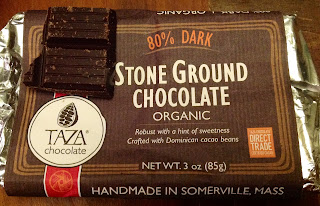I am not ashamed to be a mere dabbler of numerous delicious edible and imbibable delights.
Try as I might, I accept that the realm of true pu-erh connoisseurship may be outside my physical abilities and limited purse. I'm only willing to
put a hole in my stomach once a week so expanding my palate with young sheng
becomes a real challenge. I'd rather save up for more real estate than throw my hard-earned ducats on the best examples of aged sheng. So where can I take this hobby? Where does
this rabbit hole end?
I'll be drinking tea daily for the rest of my life as I have done at least for the past quarter of a century. And given how much pu-erh I've snuck in the house, it's very likely I'll be drinking pu-erh till the very bitter end. That is an extremely comforting thought to have such a constant to look forward to.
I'm not necessarily looking to scale the Everest of taste discernment. I want to know what the good stuff is but I don't have the need to drink it regularly. But most importantly, I want to be able to enjoy pu-erh effortlessly without having to think so hard about it. Obsessive analysis definitely hinders the moment of enjoyment, and since most of the teas I brew I'm sampling for the first time, my mind is uncontrollably whirling with comparative analysis.
Cheeses, chocolates, salumi, wine, olive oil - I am entirely content to enjoy at a subjective level. Although each of these products boasts complex flavor profiles from terroir and different methods of processing that could merit obsession, I just take each encounter simply as an opportunity for pleasure. And perhaps in a few years time, my pu-erh pursuit will mellow out in the same way.
The above is my candy purchase for the week. I normally special order dark chocolate bars by the case but since my order had not yet arrived, I had to resort to a grab bag. It took me less than 4 minutes to select these goodies since I know this grocery store's chocolate inventory by heart. Half of these I have been passing on for years due to my small-minded prejudices. For one, I've avoided bars with endangered animals for over a decade, but even I have to admit these eco-marketing bars have come a very long way in flavor.
Normally I get single origin bars 70-88% but I'm giving a reprieve to my daily recipients and going for some fun and easy stuff- classic blends of fruit and nut, chili peppers, coffee, cacao nibs, as well as new exotic mixes of coconut and curry, and even a salt and pepper chocolate bar. That's what most people like- not the uber dark bars with subtle and complex flavors that you have to scrunch your face to enjoy- but stuff you pop in your mouth for instant gratification.
I'll be drinking tea daily for the rest of my life as I have done at least for the past quarter of a century. And given how much pu-erh I've snuck in the house, it's very likely I'll be drinking pu-erh till the very bitter end. That is an extremely comforting thought to have such a constant to look forward to.
I'm not necessarily looking to scale the Everest of taste discernment. I want to know what the good stuff is but I don't have the need to drink it regularly. But most importantly, I want to be able to enjoy pu-erh effortlessly without having to think so hard about it. Obsessive analysis definitely hinders the moment of enjoyment, and since most of the teas I brew I'm sampling for the first time, my mind is uncontrollably whirling with comparative analysis.
Cheeses, chocolates, salumi, wine, olive oil - I am entirely content to enjoy at a subjective level. Although each of these products boasts complex flavor profiles from terroir and different methods of processing that could merit obsession, I just take each encounter simply as an opportunity for pleasure. And perhaps in a few years time, my pu-erh pursuit will mellow out in the same way.
The above is my candy purchase for the week. I normally special order dark chocolate bars by the case but since my order had not yet arrived, I had to resort to a grab bag. It took me less than 4 minutes to select these goodies since I know this grocery store's chocolate inventory by heart. Half of these I have been passing on for years due to my small-minded prejudices. For one, I've avoided bars with endangered animals for over a decade, but even I have to admit these eco-marketing bars have come a very long way in flavor.
Normally I get single origin bars 70-88% but I'm giving a reprieve to my daily recipients and going for some fun and easy stuff- classic blends of fruit and nut, chili peppers, coffee, cacao nibs, as well as new exotic mixes of coconut and curry, and even a salt and pepper chocolate bar. That's what most people like- not the uber dark bars with subtle and complex flavors that you have to scrunch your face to enjoy- but stuff you pop in your mouth for instant gratification.




